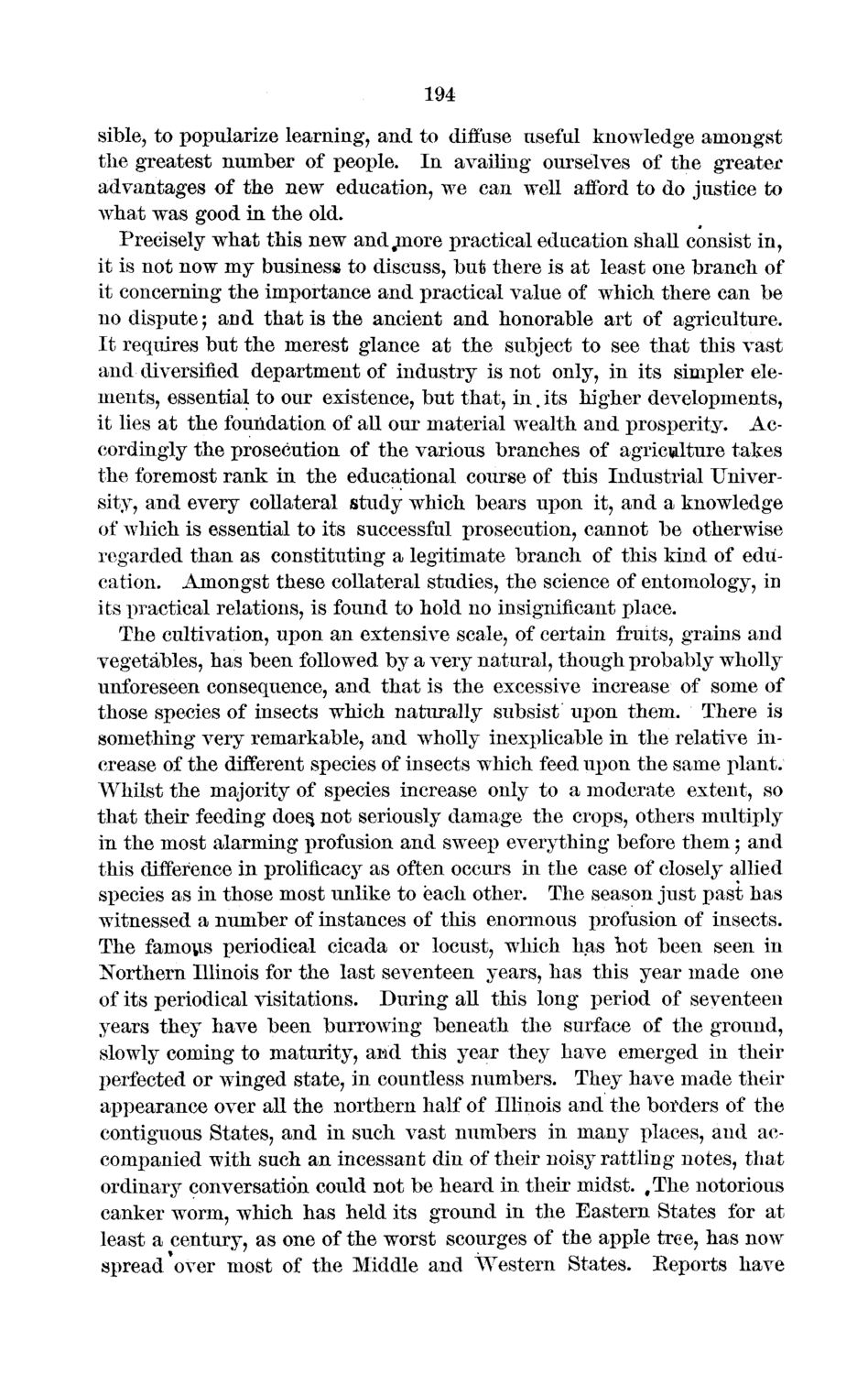| |
| |
Caption: Board of Trustees Minutes - 1872
This is a reduced-resolution page image for fast online browsing.

EXTRACTED TEXT FROM PAGE:
194 sible, to popularize learning, and to diffuse useful knowledge amongst the greatest number of people. In availing ourselves of the greater advantages of the new education, we can well afford to do justice to what was good in the old. Precisely what this new and .more practical education shall consist in, it is not now my business to discuss, but there is at least one branch of it concerning the importance and practical value of which there can be no dispute 5 and that is the ancient and honorable art of agriculture. It requires but the merest glance at the subject to see that this vast and diversified department of industry is not only, in its simpler elements, essential to our existence, but that, in. its higher developments, it lies at the foundation of all our material wealth and prosperity. Accordingly the prosecution of the various branches of agriculture takes the foremost rank in the educational course of this Industrial University, and every collateral study which bears upon it, and a knowledge of which is essential to its successful prosecution, cannot be otherwise regarded than as constituting a legitimate branch of this kind of education. Amongst these collateral studies, the science of entomology, in its practical relations, is found to hold no insignificant place. The cultivation, upon an extensive scale, of certain fruits, grains and vegetables, has been followed by a very natural, though probably wholly unforeseen consequence, and that is the excessive increase of some of those species of insects which naturally subsist upon them. There is something very remarkable, and wholly inexplicable in the relative increase of the different species of insects which feed upon the same plant. Whilst the majority of species increase only to a moderate extent, so that their feeding doe§ not seriously damage the crops, others multiply in the most alarming profusion and sweep everything before them ; and this difference in prolificacy as often occurs in the case of closely allied species as in those most unlike to each other. The season just past has witnessed a number of instances of this enormous profusion of insects. The famous periodical cicada or locust, which has hot been seen in JSTorthern Illinois for the last seventeen years, has this year made one of its periodical visitations. During all this long period of seventeen years they have been burrowing beneath the surface of the ground, slowly coming to maturity, and this year they have emerged in their perfected or winged state, in countless numbers. They have made their appearance over all the northern half of Illinois and the borders of the contiguous States, and in such vast numbers in many places, and accompanied with such an incessant din of their noisy rattling notes, that ordinary conversation could not be heard in their midst. t The notorious canker worm, which has held its ground in the Eastern States for at least a century, as one of the worst scourges of the apple tree, has now spread "over most of the Middle and Western States. Eeports have
| |